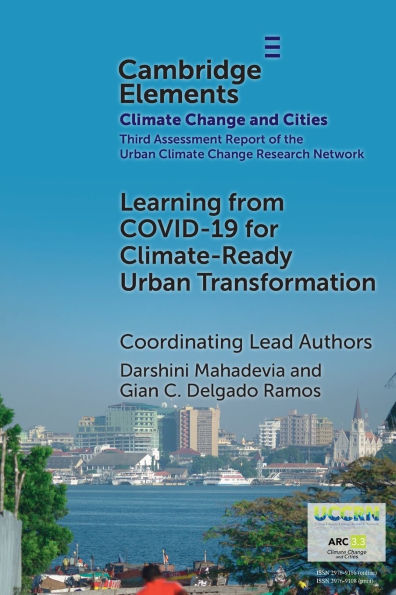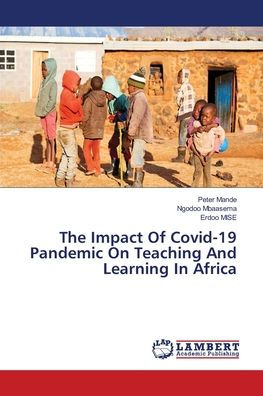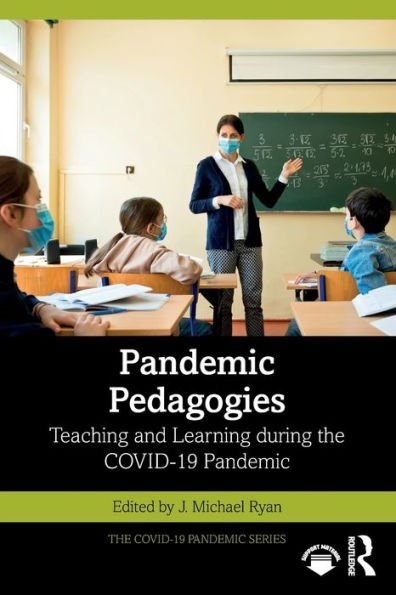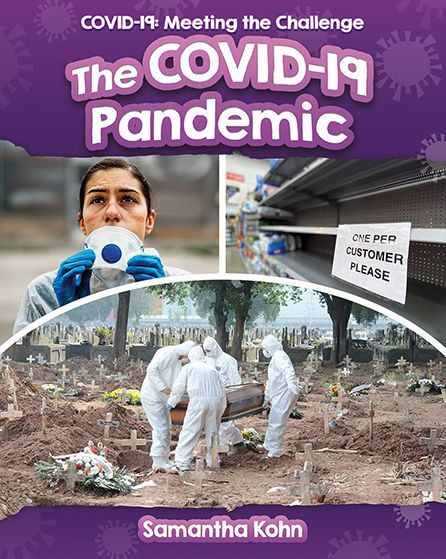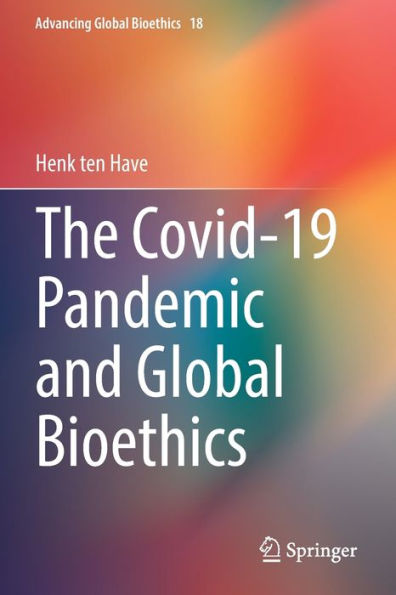Home
Learning from COVID-19: GIS for Pandemics
Barnes and Noble
Loading Inventory...
Learning from COVID-19: GIS for Pandemics in Franklin, TN
Current price: $23.99

Barnes and Noble
Learning from COVID-19: GIS for Pandemics in Franklin, TN
Current price: $23.99
Loading Inventory...
Size: Paperback
Now that the health community is in a state of reflection, how do we put the lessons learned into practice?
As we step back to examine the worldwide response to the COVID-19 pandemic, now is the time to think about how to raise the bar for our response to the next public health emergency. Now is the time to revisit health preparedness strategies and plans. And now is the time to review what the health community did that worked—and how we can do that again.
Learning from COVID-19: GIS for Pandemics
tells real-life stories about how spatial thinking became invaluable in both local and full-scale outbreaks during the COVID-19 pandemic.
Needing to answer the question of “where” sat at the forefront of everyone’s mind, and using a geographic information system (GIS) for real-time surveillance transformed possibly overwhelming data into location intelligence that provided agencies and civic leaders with valuable insights.
Co-edited by Esri chief medical officer Dr. Este Geraghty, this book highlights best practices, key GIS capabilities, and lessons learned during the COVID-19 response that can help communities prepare for the next crisis. GIS has empowered:
Organizations to use human mobility data to estimate the adherence to social distancing guidelines
Communities to monitor their health care systems’ capacity through spatially enabled surge tools
Governments to use location-allocation methods to site new resources (i.e., testing sites and augmented care sites) in ways that account for at-risk and vulnerable populations
Communities to use maps and spatial analysis to review case trends at local levels to support reopening of economies
Organizations to think spatially as they consider “back-to-the-workplace” plans that account for physical distancing and employee safety needs
Learning from COVID-19
also includes a “next steps” section that provides ideas, strategies, tools, and actions to help jump-start your own use of GIS, either as a citizen scientist or a health professional. A collection of online resources, including additional stories, videos, new ideas and concepts, and downloadable tools and content, complements this book.
Now is the time to use science and data to make informed decisions for our future, and this book shows us how we can do it.
As we step back to examine the worldwide response to the COVID-19 pandemic, now is the time to think about how to raise the bar for our response to the next public health emergency. Now is the time to revisit health preparedness strategies and plans. And now is the time to review what the health community did that worked—and how we can do that again.
Learning from COVID-19: GIS for Pandemics
tells real-life stories about how spatial thinking became invaluable in both local and full-scale outbreaks during the COVID-19 pandemic.
Needing to answer the question of “where” sat at the forefront of everyone’s mind, and using a geographic information system (GIS) for real-time surveillance transformed possibly overwhelming data into location intelligence that provided agencies and civic leaders with valuable insights.
Co-edited by Esri chief medical officer Dr. Este Geraghty, this book highlights best practices, key GIS capabilities, and lessons learned during the COVID-19 response that can help communities prepare for the next crisis. GIS has empowered:
Organizations to use human mobility data to estimate the adherence to social distancing guidelines
Communities to monitor their health care systems’ capacity through spatially enabled surge tools
Governments to use location-allocation methods to site new resources (i.e., testing sites and augmented care sites) in ways that account for at-risk and vulnerable populations
Communities to use maps and spatial analysis to review case trends at local levels to support reopening of economies
Organizations to think spatially as they consider “back-to-the-workplace” plans that account for physical distancing and employee safety needs
Learning from COVID-19
also includes a “next steps” section that provides ideas, strategies, tools, and actions to help jump-start your own use of GIS, either as a citizen scientist or a health professional. A collection of online resources, including additional stories, videos, new ideas and concepts, and downloadable tools and content, complements this book.
Now is the time to use science and data to make informed decisions for our future, and this book shows us how we can do it.
Now that the health community is in a state of reflection, how do we put the lessons learned into practice?
As we step back to examine the worldwide response to the COVID-19 pandemic, now is the time to think about how to raise the bar for our response to the next public health emergency. Now is the time to revisit health preparedness strategies and plans. And now is the time to review what the health community did that worked—and how we can do that again.
Learning from COVID-19: GIS for Pandemics
tells real-life stories about how spatial thinking became invaluable in both local and full-scale outbreaks during the COVID-19 pandemic.
Needing to answer the question of “where” sat at the forefront of everyone’s mind, and using a geographic information system (GIS) for real-time surveillance transformed possibly overwhelming data into location intelligence that provided agencies and civic leaders with valuable insights.
Co-edited by Esri chief medical officer Dr. Este Geraghty, this book highlights best practices, key GIS capabilities, and lessons learned during the COVID-19 response that can help communities prepare for the next crisis. GIS has empowered:
Organizations to use human mobility data to estimate the adherence to social distancing guidelines
Communities to monitor their health care systems’ capacity through spatially enabled surge tools
Governments to use location-allocation methods to site new resources (i.e., testing sites and augmented care sites) in ways that account for at-risk and vulnerable populations
Communities to use maps and spatial analysis to review case trends at local levels to support reopening of economies
Organizations to think spatially as they consider “back-to-the-workplace” plans that account for physical distancing and employee safety needs
Learning from COVID-19
also includes a “next steps” section that provides ideas, strategies, tools, and actions to help jump-start your own use of GIS, either as a citizen scientist or a health professional. A collection of online resources, including additional stories, videos, new ideas and concepts, and downloadable tools and content, complements this book.
Now is the time to use science and data to make informed decisions for our future, and this book shows us how we can do it.
As we step back to examine the worldwide response to the COVID-19 pandemic, now is the time to think about how to raise the bar for our response to the next public health emergency. Now is the time to revisit health preparedness strategies and plans. And now is the time to review what the health community did that worked—and how we can do that again.
Learning from COVID-19: GIS for Pandemics
tells real-life stories about how spatial thinking became invaluable in both local and full-scale outbreaks during the COVID-19 pandemic.
Needing to answer the question of “where” sat at the forefront of everyone’s mind, and using a geographic information system (GIS) for real-time surveillance transformed possibly overwhelming data into location intelligence that provided agencies and civic leaders with valuable insights.
Co-edited by Esri chief medical officer Dr. Este Geraghty, this book highlights best practices, key GIS capabilities, and lessons learned during the COVID-19 response that can help communities prepare for the next crisis. GIS has empowered:
Organizations to use human mobility data to estimate the adherence to social distancing guidelines
Communities to monitor their health care systems’ capacity through spatially enabled surge tools
Governments to use location-allocation methods to site new resources (i.e., testing sites and augmented care sites) in ways that account for at-risk and vulnerable populations
Communities to use maps and spatial analysis to review case trends at local levels to support reopening of economies
Organizations to think spatially as they consider “back-to-the-workplace” plans that account for physical distancing and employee safety needs
Learning from COVID-19
also includes a “next steps” section that provides ideas, strategies, tools, and actions to help jump-start your own use of GIS, either as a citizen scientist or a health professional. A collection of online resources, including additional stories, videos, new ideas and concepts, and downloadable tools and content, complements this book.
Now is the time to use science and data to make informed decisions for our future, and this book shows us how we can do it.

